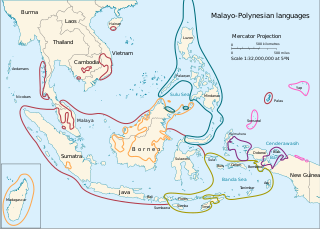
The Malayo-Polynesian languages are a subgroup of the Austronesian languages, with approximately 385.5 million speakers. The Malayo-Polynesian languages are spoken by the Austronesian peoples outside of Taiwan, in the island nations of Southeast Asia and the Pacific Ocean, with a smaller number in continental Asia in the areas near the Malay Peninsula, with Cambodia, Vietnam and the Chinese island Hainan as the northwest geographic outlier. Malagasy, spoken on the island of Madagascar off the eastern coast of Africa in the Indian Ocean, is the furthest western outlier.
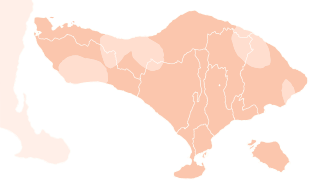
Balinese is an Austronesian language spoken on the Indonesian island of Bali, as well as Northern Nusa Penida, Western Lombok, Southern Sumatra, and Sulawesi. Most Balinese speakers also use Indonesian. The 2000 national census recorded 3.3 million people speakers of Balinese, however the Bali Cultural Agency estimated in 2011 that the number of people still using the Balinese language in their daily lives is under 1 million. The language has been classified as "not endangered" by Glottolog.

Madurese is a language of the Madurese people, native to the Madura Island and Eastern Java, Indonesia; it is also spoken by migrants to other parts of Indonesia, namely the eastern salient of Java, the Masalembu Islands and even some on Kalimantan. It was traditionally written in the Javanese script, but the Latin script and the Pegon script is now more commonly used. The number of speakers, though shrinking, is estimated to be 10-13 million, making it one of the most widely spoken languages in the country. Bawean Madurese, which is a dialect of Madurese, is also spoken by Baweanese descendants in Malaysia and Singapore.

Makassarese, sometimes called Makasar, Makassar, or Macassar, is a language of the Makassarese people, spoken in South Sulawesi province of Indonesia. It is a member of the South Sulawesi group of the Austronesian language family, and thus closely related to, among others, Buginese, also known as Bugis. The areas where Makassarese is spoken include the Gowa, Sinjai, Maros, Takalar, Jeneponto, Bantaeng, Pangkajene and Islands, Bulukumba, and Selayar Islands Regencies, and Makassar. Within the Austronesian language family, Makassarese is part of the South Sulawesi language group, although its vocabulary is considered divergent compared to its closest relatives. In 2000, Makassarese had approximately 2.1 million native speakers.
The Central–Eastern Malayo-Polynesian (CEMP) languages form a proposed branch of the Malayo-Polynesian languages consisting of over 700 languages.
Paluʼe is a Malayo-Polynesian language spoken on Paluʼe Island, Indonesia.

The Sasak language is spoken by the Sasak ethnic group, which make up the majority of the population of Lombok, an island in the West Nusa Tenggara province of Indonesia. It is closely related to the Balinese and Sumbawa languages spoken on adjacent islands, and is part of the Austronesian language family. Sasak has no official status; the national language, Indonesian, is the official and literary language in areas where Sasak is spoken.
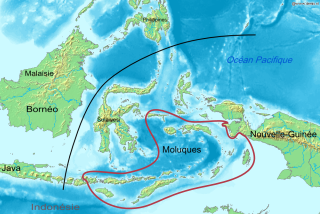
The Central Malayo-Polynesian languages (CMP) are a proposed branch in the Malayo-Polynesian subgroup of the Austronesian language family. The languages are spoken in the Lesser Sunda and Maluku Islands of the Banda Sea, in an area corresponding closely to the Indonesian provinces of East Nusa Tenggara and Maluku and the nation of East Timor, but with the Bima language extending to the eastern half of Sumbawa Island in the province of West Nusa Tenggara and the Sula languages of the Sula archipelago in the southwest corner of the province of North Maluku. The principal islands in this region are Sumbawa, Sumba, Flores, Timor, Buru, and Seram. The numerically most important languages are Bima, Manggarai of western Flores, Uab Meto of West Timor, and Tetum, the national language of East Timor.

The Malayic languages are a branch of the Malayo-Polynesian subgroup of the Austronesian language family. The most prominent member is Malay, a pluricentric language given national status in Brunei and Singapore while also the basis for national standards Malaysian in Malaysia and Indonesian in Indonesia. The Malayic branch also includes local languages spoken by ethnic Malays, further several languages spoken by various other ethnic groups of Sumatra, Indonesia and Borneo even as far as Urak Lawoi in the southwestern coast of Thailand.
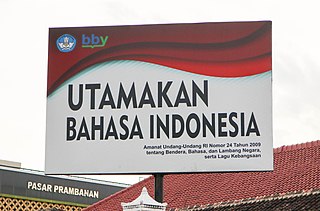
Indonesia is home to over 700 living languages spoken across its extensive archipelago. This significant linguistic variety constitutes approximately 10% of the world’s total languages, positioning Indonesia as the second most linguistically diverse nation globally, following Papua New Guinea. The majority of these languages belong to the Austronesian language family, prevalent in the western and central regions of Indonesia, including languages such as Acehnese, Sundanese, and Buginese. In contrast, the eastern regions, particularly Papua and the Maluku Islands, are home to over 270 Papuan languages, which are distinct from the Austronesian family and represent a unique linguistic heritage. The language most widely spoken as a native language is Javanese, primarily by the Javanese people in the central and eastern parts of Java Island, as well as across many other islands due to migration.
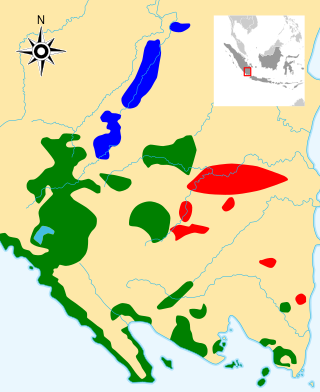
Lampung or Lampungic is an Austronesian language or dialect cluster with around 1.5 million native speakers, who primarily belong to the Lampung ethnic group of southern Sumatra, Indonesia. It is divided into two or three varieties: Lampung Api, Lampung Nyo, and Komering. The latter is sometimes included in Lampung Api, sometimes treated as an entirely separate language. Komering people see themselves as ethnically separate from, but related to, Lampung people.

Acehnese or Achinese is an Austronesian language natively spoken by the Acehnese people in Aceh, Sumatra, Indonesia. This language is also spoken by Acehnese descendants in some parts of Malaysia like Yan, in Kedah. Acehnese is used as the co-official language in the province of Aceh, alongside Indonesian.
The Sigulai language is an Austronesian language spoken on Simeulue island off the western coast of Sumatra in Indonesia. It belongs to the Malayo-Polynesian branch of the Austronesian languages. Sikule is one of Northwest Sumatra–Barrier Islands languages, which are a sub-group of Western Malayo-Polynesian.

The Bali–Sasak–Sumbawa languages are a group of closely related languages spoken in Indonesia in the western Lesser Sunda Islands. The three languages are Balinese on Bali, Sasak on Lombok, and Sumbawa on western Sumbawa.
Kei is an Austronesian language spoken in a small region of the Moluccas, a province of Indonesia.
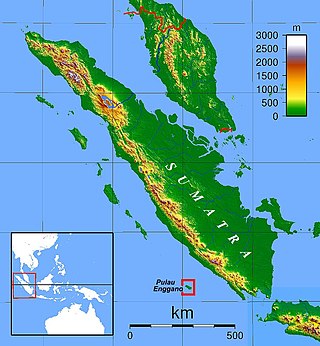
The Enggano language, or Engganese, is an Austronesian language spoken on Enggano Island off the southwestern coast of Sumatra, Indonesia.
The Biatah language is spoken in the Malaysian state of Sarawak and the Indonesian province of West Kalimantan. It belongs to the Malayo-Polynesian branch of the Austronesian language family.
The Bima language, or Bimanese, is an Austronesian language spoken on the eastern half of Sumbawa Island, Indonesia, which it shares with speakers of the Sumbawa language. Bima territory includes the Sanggar Peninsula, where the extinct Papuan language Tambora was once spoken. Bima is an exonym; the autochthonous name for the territory is Mbojo and the language is referred to as Nggahi Mbojo. There are over half a million Bima speakers. Neither the Bima nor the Sumbawa people have alphabets of their own for they use the alphabets of the Bugis and the Malay language indifferently.
The Tamanic languages are a small group of languages of Kapuas Hulu Regency, West Kalimantan:
Taliabo (Taliabu) is a Malayo-Polynesian language spoken on the island of the same name in the Moluccas of Indonesia.












